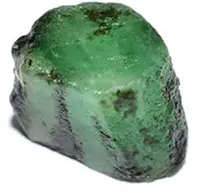
Exploring the Origins
Emerald, a variant of beryl, gets its signature green color from chromium and sometimes vanadium. The shades range from light to dark green, with varying levels of transparency. While it scores 7.5–8 on the Mohs scale, inclusions can affect its durability. Major deposits are found in Brazil, Columbia, Egypt, India, and the United States.
Historical and Cultural Significance
Emeralds, mined in Egypt since 330 B.C.E., were a favorite of Cleopatra. In South America, the Incas and Aztecs revered emeralds as holy, but Spanish conquistadors later exploited these deposits. The Mogul Emerald, dating back to 1695, is one of the largest and most renowned emeralds, fetching $2.2 million at a 2001 auction.
Healing Properties
Emerald stimulates the heart chakra, benefiting both emotional and physical heart health. It’s beneficial for the eyes, lungs, spine, and muscles, and can mitigate epilepsy and seizures when worn around the neck. It also aids in recovering from infectious diseases.
Magical Uses
Emerald is believed to foster loyalty, unity, and unconditional love. However, a color change in the stone may signify unfaithfulness. Wearing emerald can repel negativity and inspire positive actions, but continuous wear might provoke negative feelings. It’s particularly useful for enhancing psychic abilities and clairvoyance.
Feng Shui Applications
In Feng Shui, the green color of emerald is linked with wood energy, promoting growth, new beginnings, vitality, and abundance. Placing emerald stones in the eastern and southeastern areas or the Family/Foundation sector of a home can enhance domestic harmony.
Personal and Spiritual Growth
As the birthstone for May, emerald is instrumental in balancing emotions and deepening one’s spiritual connection. It is excellent for meditation, focusing intention, raising consciousness, and wisdom gathering. For meditation, a clear variety of emerald is recommended over an opaque one.
